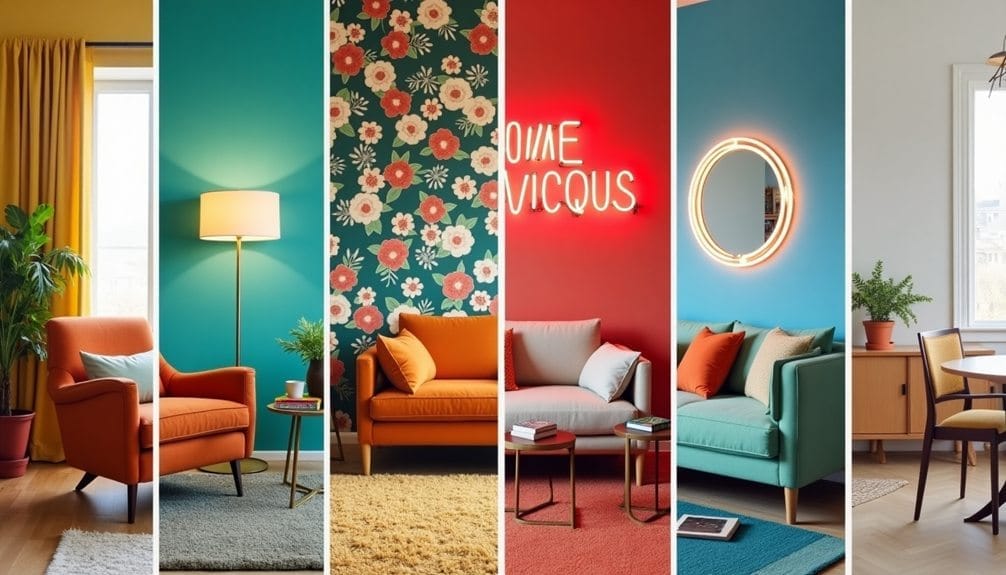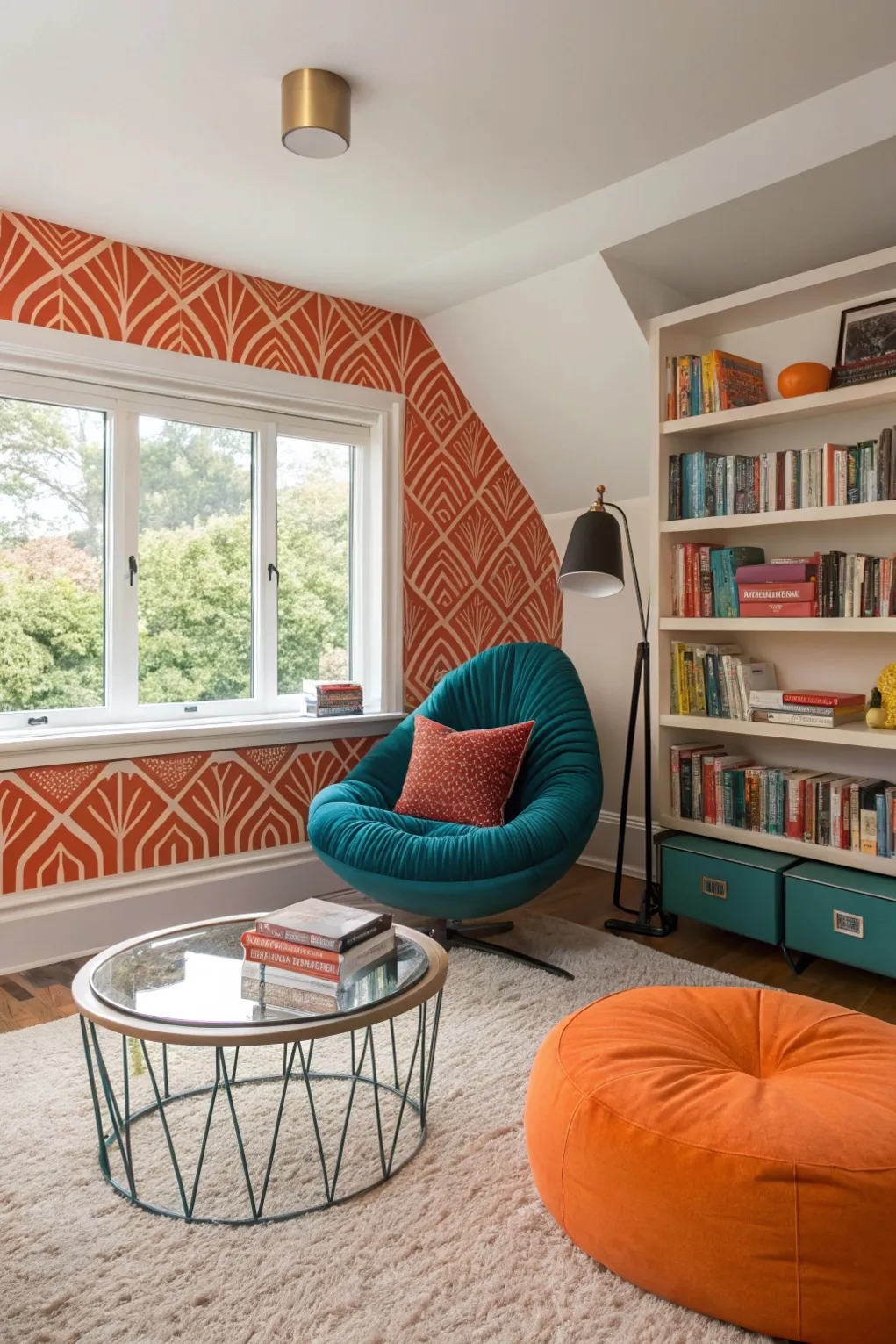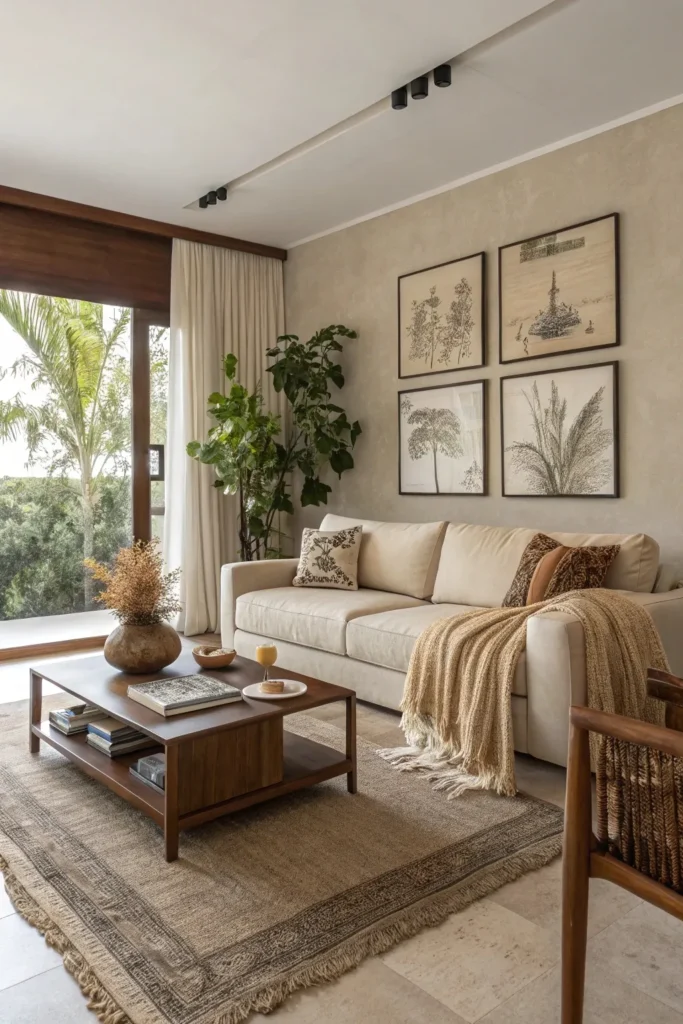Step into the time machine of home decor trends over the past 50 years, where each decade serves as a chapter in the evolving story of design evolution. From the psychedelic hues of the 1970s to the sleek minimalism of the 2000s, and the cozy hygge vibes of the 2010s, the journey through iconic styles is both nostalgic and forward-thinking. As you explore the interplay of vintage nostalgia and futuristic innovation, you'll uncover how these trends have shaped the way we view and interact with our living spaces.
1970s: Groovy Patterns and Earth Tones
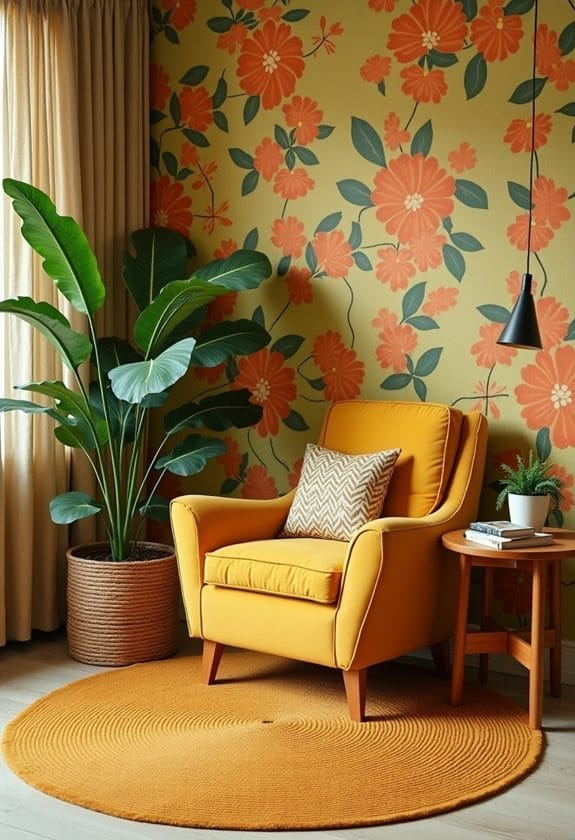
In the 1970s, home decor embraced groovy patterns and earth tones with a fervor that defined the era. Psychedelic textiles were a hallmark of this period, with bold, swirling designs adorning everything from curtains to throw pillows.
These vibrant patterns, often in hues of orange, brown, and avocado green, brought a sense of whimsy and free-spiritedness into homes. Alongside these psychedelic textiles, earthy ceramics played a significant role in 70s decor.
Matte-finished pottery in warm, natural tones like terracotta and mustard added a grounding element to the eclectic mix of patterns. The combination of these elements created a unique aesthetic that reflected the cultural shifts and artistic experimentation of the time.
1980s: Bold Colors and Geometric Shapes
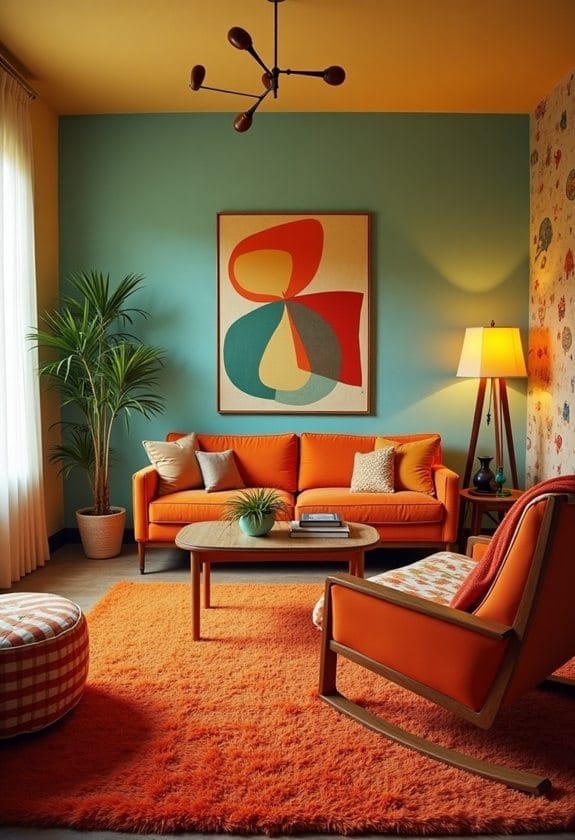
The 1980s ushered in a bold new era of home decor, characterized by vibrant colors and geometric shapes that exuded a sense of modernity and energy.
Bold prints and vibrant accents became staples of interior design during this period, with homeowners embracing daring color combinations like neon pinks, electric blues, and vibrant greens.
Geometric shapes were prominently featured in furniture, wallpaper, and accessories, adding a futuristic and dynamic vibe to living spaces.
The use of sleek lines and sharp angles in design elements reflected the technological advancements and fast-paced lifestyle of the era.
This trend towards bold colors and geometric shapes transformed homes into vibrant, energetic spaces that captivated the eye and captured the spirit of the 1980s.
1990s: Pastels and Shabby Chic

Embracing a softer and more delicate aesthetic, the 2000s saw a shift towards pastels and shabby chic elements in home decor.
Vintage textiles and distressed finishes became key features in creating a cozy and nostalgic atmosphere. Pastel hues like soft pinks, blues, and greens dominated walls and furnishings, infusing spaces with a sense of tranquility and charm.
Shabby chic design brought forth a mix of vintage pieces with a weathered look, creating a lived-in and inviting appeal. Furniture with distressed finishes added character and a sense of history to rooms, evoking a feeling of comfort and warmth.
The 2000s marked a departure from bold colors and geometric shapes, ushering in a trend of understated elegance and vintage-inspired decor.
2000s: Industrial and Minimalist
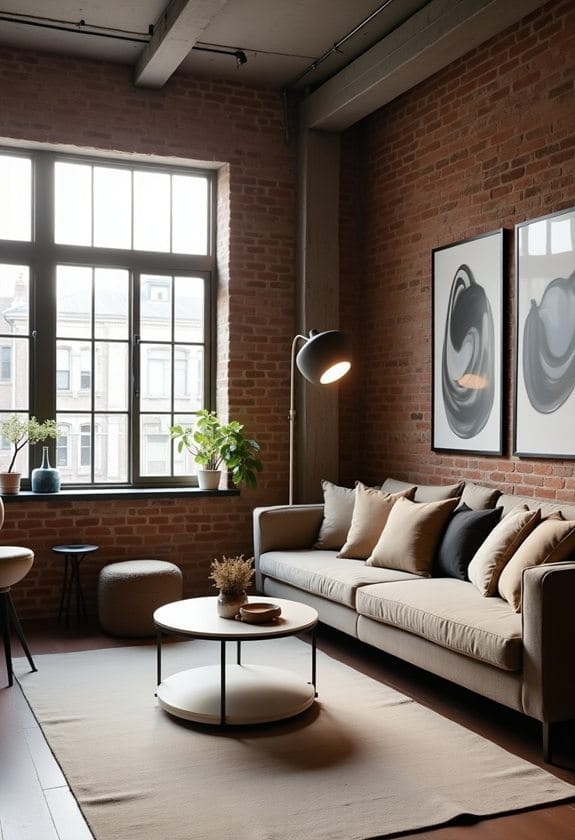
During the 2010s, home decor trends took a sharp turn towards industrial and minimalist styles. Urban lofts became popular, drawing inspiration from factory aesthetics.
Raw materials like exposed brick and concrete were embraced, creating open spaces that highlighted simplicity and functionality. Exposed elements such as ductwork and piping added an edgy vibe to interiors.
Design enthusiasts incorporated reclaimed wood for a rustic touch, while metal accents brought an industrial feel. The focus was on clean lines, neutral color palettes, and uncluttered spaces.
This trend celebrated the beauty of simplicity and the charm of imperfection, creating a modern yet cozy atmosphere in homes.
2010s: Scandinavian and Hygge
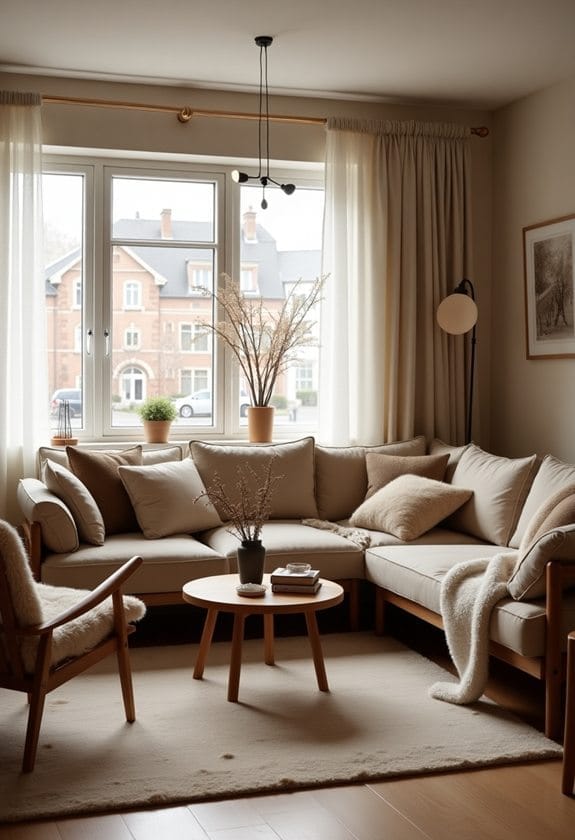
Scandinavian and Hygge trends in home decor during the 2010s brought a sense of warmth and simplicity to living spaces.
Scandinavian simplicity was characterized by clean lines, natural materials like wood and stone, and a neutral color palette. This trend aimed to create a minimalist yet cozy atmosphere by incorporating functional furniture and plenty of natural light.
On the other hand, the concept of cozy hygge became increasingly popular during this decade. Hygge emphasized creating a warm and inviting ambiance through soft textiles, candles, and comfortable seating areas designed for relaxation and socializing.
Together, these trends transformed homes into tranquil retreats, promoting a sense of well-being and contentment in the midst of the fast-paced modern world.
2020s: Sustainable and Biophilic Design
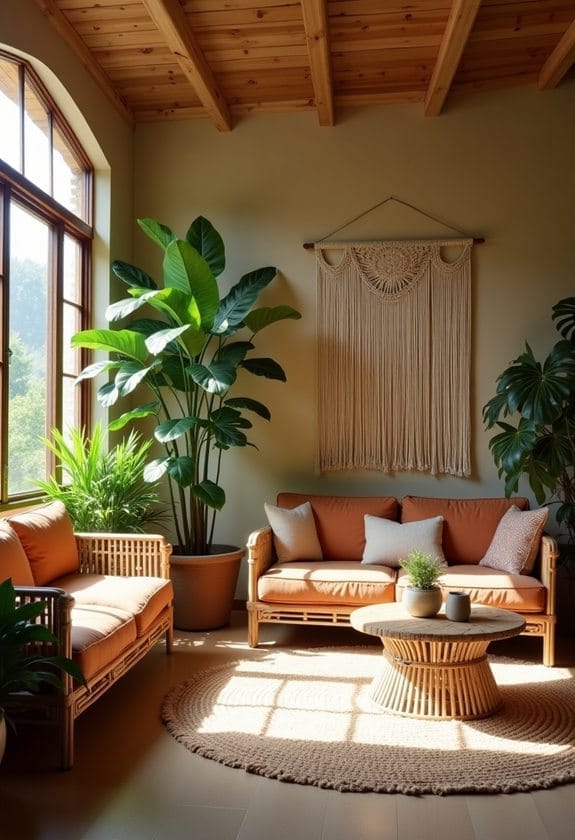
In the domain of home decor trends, the shift from the cozy embrace of Scandinavian and Hygge styles in the 2010s has now paved the way for a new era defined by sustainability and biophilic design in the 2020s.
This era prioritizes eco-friendly materials, nature-inspired elements, and sustainable practices. Homeowners are incorporating indoor gardening, living walls, and recycled decor to bring nature indoors.
Green technologies are seamlessly integrated to promote energy efficiency and reduce environmental impact. Wellness spaces with ample natural light are designed to enhance mental and physical well-being.
Organic textiles are favored for their sustainability and comfort. The 2020s mark a significant turn towards harmonizing living spaces with nature while embracing responsible consumption and design choices.
2030s: Tech-Integrated Smart Homes
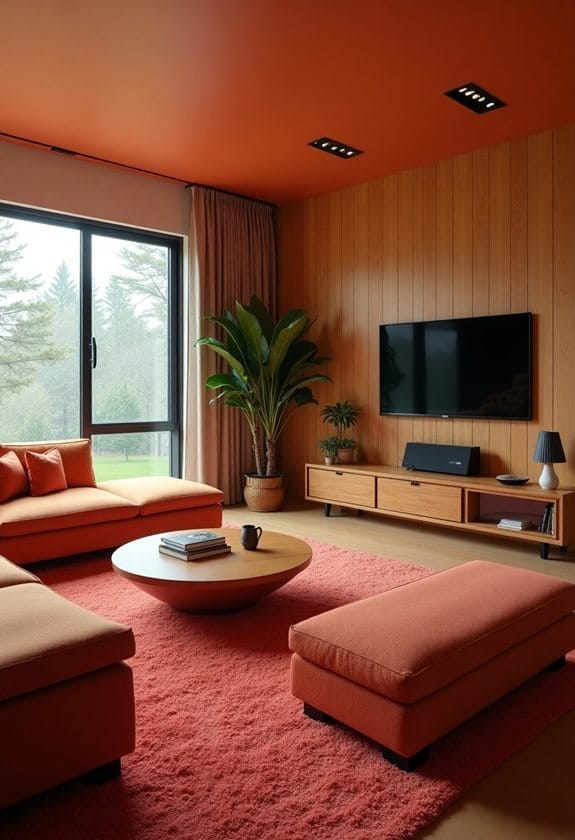
The 2020s have seen a rapid evolution in home decor trends, shifting now into the era of tech-integrated smart homes. Smart home automation has become a cornerstone of modern living, offering convenience and efficiency like never before.
Connected living is no longer a distant dream but a tangible reality in today's homes. From voice-controlled assistants to automated lighting and temperature systems, smart homes are revolutionizing the way we interact with our living spaces.
These advancements not only enhance the functionality of homes but also provide a seamless blend of technology and design. Embracing smart home technologies allows for a more personalized and responsive environment, catering to individual preferences and needs.
As we explore deeper into the 2020s, the integration of technology into home decor continues to redefine contemporary living.
2040s: Virtual Reality Decor
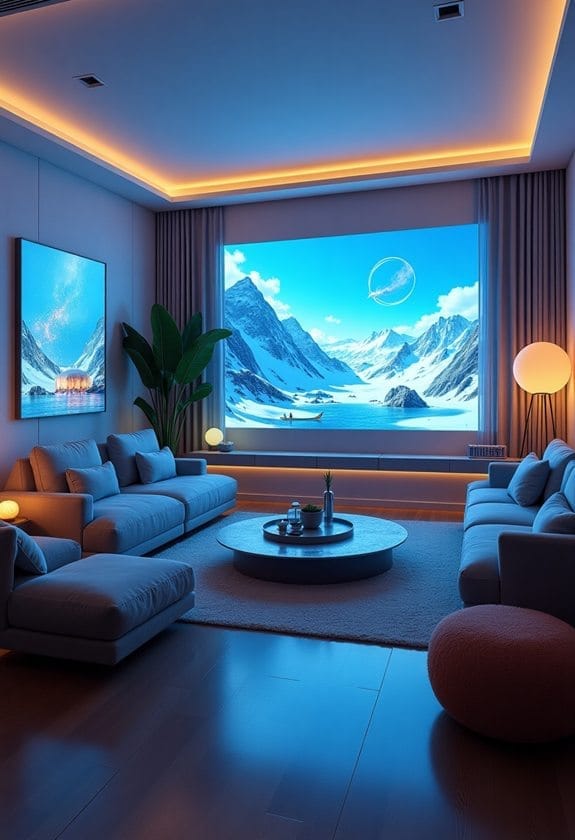
An immersive revolution in the domain of home decor is underway with the advent of Virtual Reality Decor in the 0s.
Virtual Reality Decor allows you to transform your living space into a sphere of endless possibilities, offering immersive experiences like never before.
Imagine walking through your home and seeing digital art displayed on your walls, which can easily be changed to suit your mood or the occasion.
With Virtual Reality Decor, you can transport yourself to any environment, from a serene beachfront to a bustling cityscape, all within the confines of your home.
This trend blurs the lines between the physical and digital worlds, creating a dynamic and interactive living space that truly reflects the technological advancements of the 0s.
2050s: Space-Saving Modular Furniture
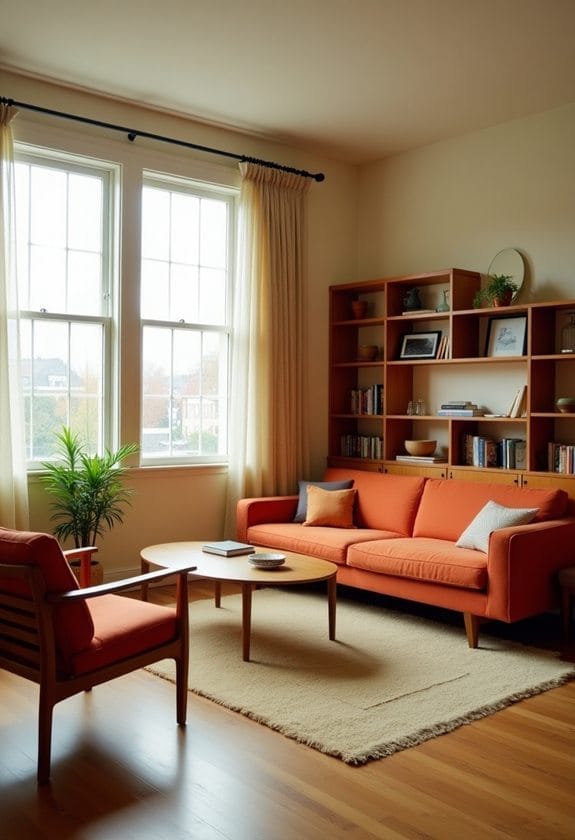
Experience a revolution in home design with the emergence of space-saving modular furniture in the 0s.
This trend was a response to the increasing need for furniture that could adapt to urban living spaces. Modular versatility allowed for multifunctional designs, offering innovative storage solutions and compact options without compromising on style.
The focus was on space efficiency and adaptable layouts, catering to the modern aesthetics of the time. Homeowners embraced the concept of furniture customization, enabling them to create personalized living spaces that suited their needs.
The design flexibility of modular furniture became a key feature, providing endless possibilities for arranging and rearranging pieces to fit different room layouts.
2060s: Retro Futurism and AI Influences
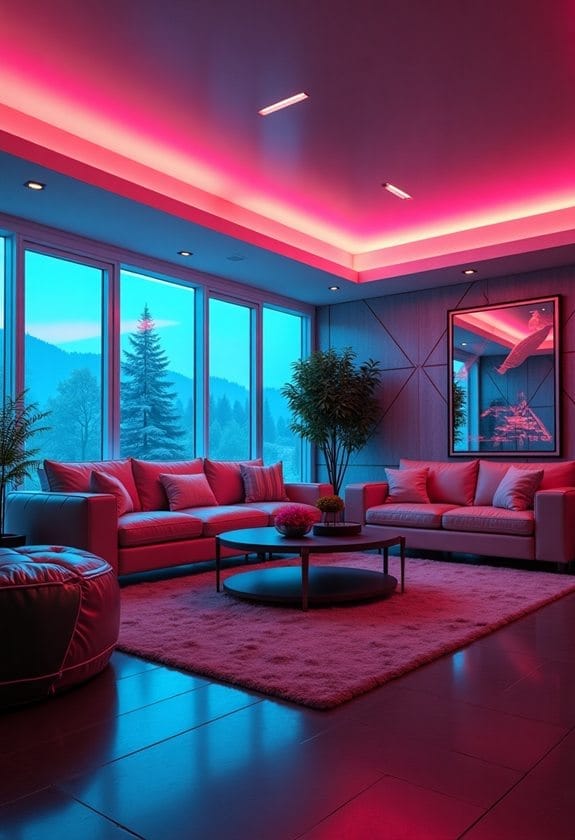
Embracing a blend of nostalgia and innovation, the 0s ushered in a design era influenced by retro futurism and artificial intelligence (AI). The futuristic aesthetics of the 0s were characterized by sleek lines, metallic finishes, and a minimalist approach.
AI artistry made its mark through smart home technology, with voice-activated assistants and automated systems becoming more prevalent in households. This era saw a fascination with the possibilities of technology, reflected in home decor that embraced a mix of vintage charm and cutting-edge design.
Furniture designs featured futuristic elements like geometric shapes and space-age materials, creating a unique blend of past and future in home interiors. The 0s truly encapsulated a time where retro futurism and AI influences coexisted harmoniously in home decor.

